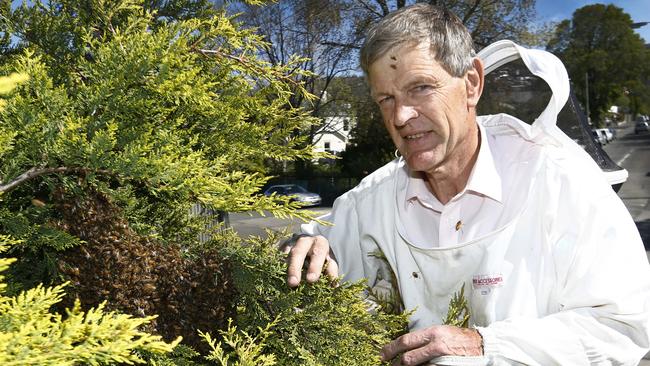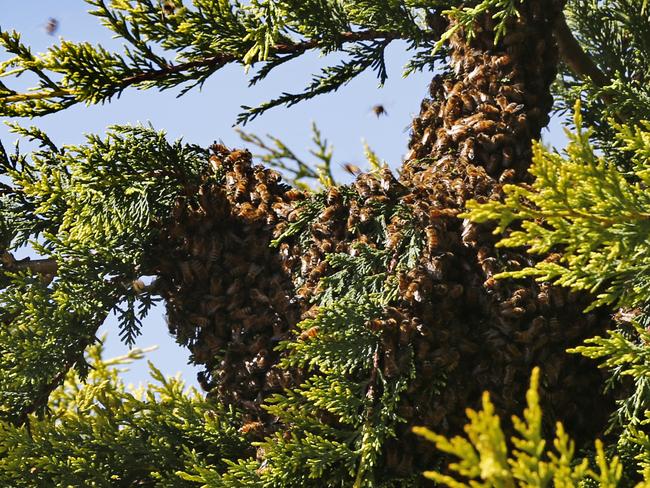Bee swarm removals taking the string from Hobart’s spring
SWARM removalist Maurice Rimes has been run off his feet with calls to remove bee swarms as they take advantage of the warmer weather.

SWARM removalist Maurice Rimes has been an unusually busy bee.
Mr Rimes has been run off his feet with calls to remove bee swarms as they take advantage of Hobart’s warmer weather.
Locals noticing an increase in bee swarms while gardening are not mistaken — Tasmania’s bees are on the move after waiting out the cold, wet weather.
“There’s a sort of pent-up need for the bees to swarm,” King Bee Honey’s Mr Rimes said.
“As soon as it warms up, that’s when they come out in large numbers.
“It’s a normal thing that bees do.”
European bees, Tasmania’s honey-producers, swarm for two reasons.
They’ve either run out of space in the hive, or a new queen has emerged.
In the latter case, the old queen takes off with thousands of hangers-on to find a new home.
Swarms can come from poorly managed hives or feral colonies living rough.
They’ll find new homes in tree logs, chimneys, wall cavities and under barbecue covers.
“It’s nature’s way of making two colonies out of one, of reproducing,” Mr Rimes said.

Hobart City Council’s recent decision to relax rules for beekeepers was unlikely to have caused more swarms, Mr Rimes said, but poorly managed hives do.
Keepers could replace their queen every two years and add extra boxes to the hive for more space, Mr Rimes said.
“Bees don’t normally escape from a hive,” he said.
“Providing the beekeeper does those two things then swarming is quite rare.”
Contrary to popular myth, a swarm isn’t necessarily dangerous.
It won’t chase a person and is unlikely to be aggressive towards them.
”When they’re swarming, they’re gnereally focused on finding a new place to live and they haven’t got a home to defend, so their propensity to sting is much less than it normally is,” Mr Rimes said.
“You might see a huge cloud of bees moving across your garden but they’ve got better things to do than to bother you, as long as you don’t go flapping your hands around your head.”
People, especially those with allergies, should take precautions by heading indoors and closing doors and windows.
A list of swarm removers can be found of the Tasmanian Beekeepers Association website.
Originally published as Bee swarm removals taking the string from Hobart’s spring



